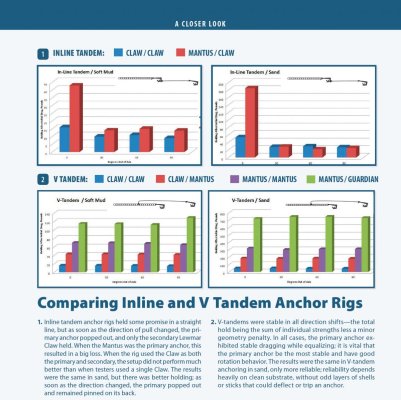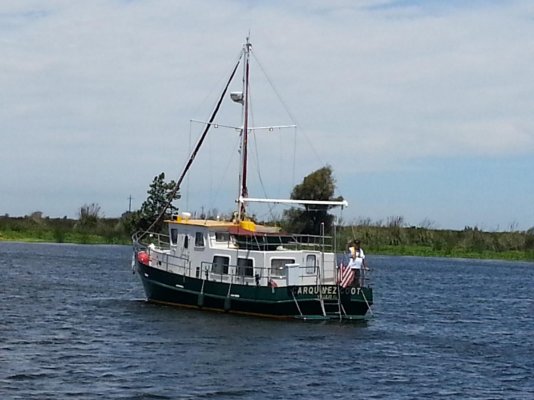Granted there are many ways to layout and "set" your anchor and many of them can be effective. I have seen several boaters drive forward (some at a fairly good clip) while dropping their anchor and rode, letting their forward momentum turn the boat and I guess "set" the anchor. I guess it could be a "practice run" for any upcoming "reset" that may be needed?? From what I have seen, it seems to work OK, although I thought anchors were meant to be pulled from the shank

.
I have witnessed those who let out just enough rode to reach the bottom (and maybe a bit more) and then back all over the bay trying to get it hold (usually without success), and also those who drop the anchor and proceed to "pile" the chain on top of it, immediately shutting down the engine and then jumping into the dinghy for a "shore excursion". Both of those methods not recommended, but I have seen the "pile" method actually work as the boat was still there in the morning.

I do also agree with the short scope in shallow water issue and the "selfish" boater who puts out extremely long rode layouts (except when storm conditions are expected) effectively taking up a large portion of the anchorage issue.
I think some of these "different" ideas discussed by various posters could be "regional" and based on local conditions and factors as well as what various boaters have tried and found "worked for them" under the conditions they find themselves in. I agree with Ted, it is very important that your ground tackle be able to "reset" itself without your direct intervention, however, I like to do everything I can to increase my odds of not really having to rely on a reset. For me, these things include: using a very good, properly sized anchor, all chain rode with the proper scope, selecting a protected location with known good holding, and ensuring that I have a dependable set to start with.
Here in the PNW area, it is rare to anchor in "shallow" water and we often anchor in depths of 30 plus feet with regular large tide swings of sometimes up to 20+ feet.
Anyway, I am comfortable and confident in the methods that I use in this area (described in an earlier post), as it sounds like others have found what works for them where they are.


